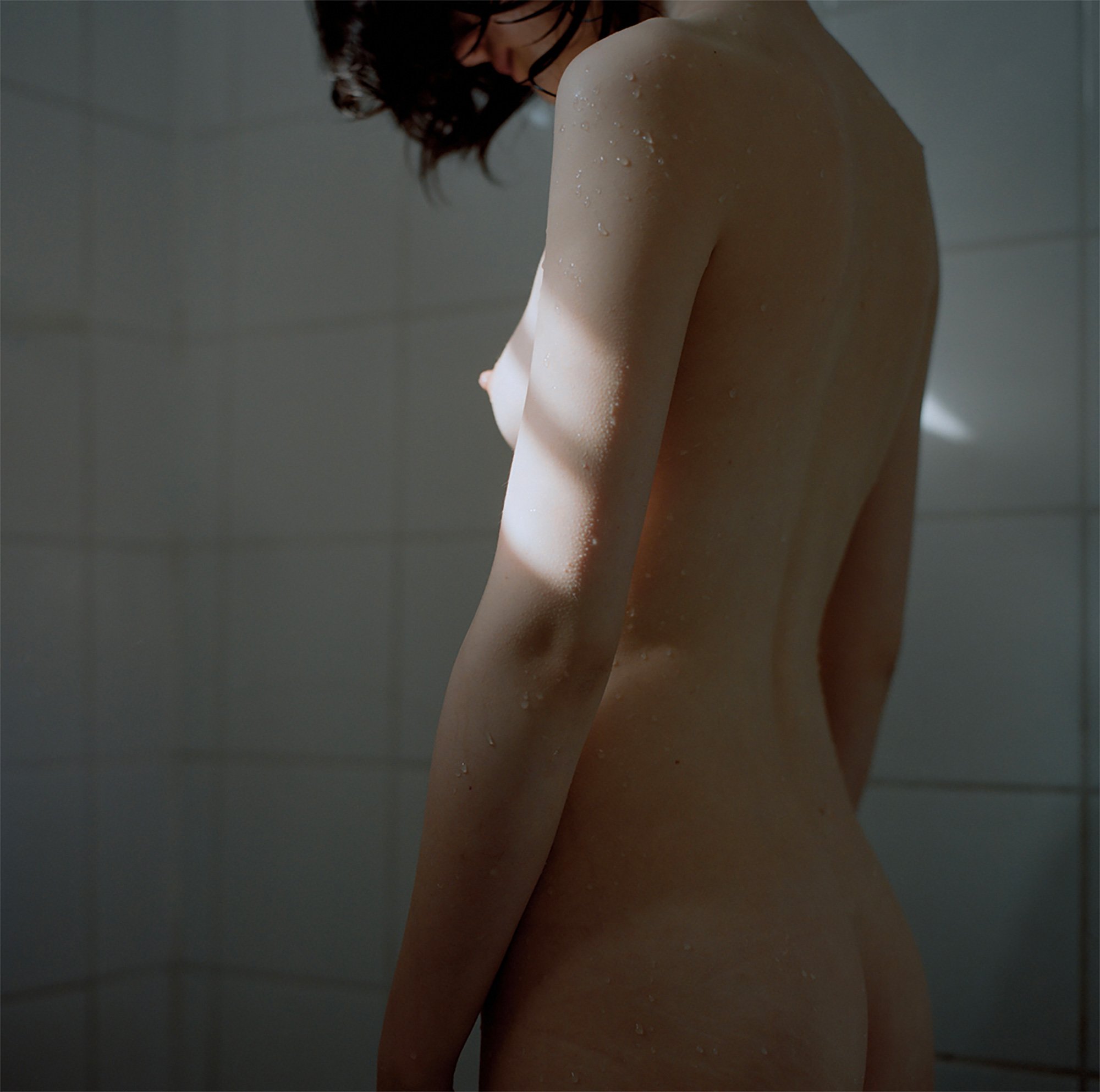Touch Has A Memory
In her work, Qingyang Chen, explores the tactile feeling, the touch, the feel of the body, the skin, or the object. The research of the touch reflects on the inner and the outer world and personal experience being an active part of it. Qingyang invites us to get reacquainted with the object in her photography through awakening our sensory abilities. The close-ups, the work with light and shadow emphasize the possibility of the viewer to feel the touch portrayed: of fingers with the body, of water drops with the skin, of hand with small river stones or the soap bubble.
Qingyang Chen is a London-based photographer, who, in the past two years, exhibited her work in China, Korea, New Zealand, and the UK. Qingyang graduated with an M.A in Photography from the University of Arts, London in 2019, after which she gained experience as a curator working for the Arthill Gallery, London. In this conversation, we speak about Qingyang’s recent project Touch Has a Memory, her main takeaways from studying in the University, and the way she approaches her research of the body and the touch.
‘Touching evokes closeness and intimacy more than any other sensation because you MUST connect and there’s a flow between the two surfaces’
Your series Touch Has A Memory focuses on the tactile feeling, the ability to experience the physicality of the object or the own body. What, in your opinion, does the sense of touch add to our understanding of the state of the object?
Touching evokes closeness and intimacy more than any other sensation because you MUST connect and there’s a flow between the two surfaces — as in my chase after fingertips and skin, to and fro. And this feeling is very private and real — fingers feeling the skin, its temperature, and its humidity — a lived experience.
At the same time, the understanding of the state of the objects is more like a mental feeling. This is more of a psychological perception and impression; when we touch something, there is an imaginary, ambiguous space, and this sense of uncertainty is connected to our experience and memory, which is a new way to think about what we see and how we feel.
‘In the picture of my hand on my thigh, as water droplets fall through my fingers, the tactile experience of water and touching, for me, acts as a sort of a trigger.’
Although we speak of the sense of touch, most of the characters in the series are alone. How do you think the ability to perceive the surrounding world is enhanced by the state of loneliness?
When you are alone, you look inside yourself — not the external connection, but the inner dialogue. It's like your own voice will appear; this is similar to the state of making art, making art is a lonely state as well. For example, in the picture of my hand on my thigh, as water droplets fall through my fingers, the tactile experience of water and touching, for me, acts as a sort of a trigger, an entry point into this state of mind.
‘By documenting my personal experience and emotions in lockdown, photography has also become a way for me to deal with the isolation.’
The state of loneliness exaggerated by the numerous lockdowns has forced creators to experiment to stay active and produce art. What was the main learning for you during this period? What changed in your approach to photography?
Since lockdown, working entirely from home has, in fact, heightened the intimacy that is core to my shooting style. This year the world around me has slowed down, and I've started to notice much more the relationship between me and my surroundings.
By documenting my personal experience and emotions in lockdown, photography has also become a way for me to deal with the isolation as well. For instance, I’ve become more sensitive to and more aware of the everyday changes in shadow and light just here where I live. Photography now, for me, is like a medium, drawing me into sensory participation with this tiny room, and then taking me from this inner space to the outside.
‘I now have different psychological tools to make the photography engaging to look at and to move on, to welcome the viewer into this poetic dimension.’
You’ve recently accomplished an M.A in Photography from the University of Arts, London. How did the process of studies help in viewing art differently or which elements do you pay more attention to today?
The period in school was more like a research process, allowing me to see a wider variety of expressions and possibilities in art. I had the time and encouragement to research and to think, rather than take pictures, which gave me more perspective on how to analyse my feelings, rethinking my work, and giving it more depth. That was its real value, but now I’ve moved on, and I’m interested in pushing towards more emotionality and more interiority. I now have different psychological tools to make the photography engaging to look at and to move on, to welcome the viewer into this poetic dimension.
Which moment from this project is most precious to you?
When I was shooting, I felt touched by seeing something other in the image than the literal: perhaps, memory, emotion, sensibility. I’ve learned that you can record intuitively instead of rationally. The emotional reaction warms me. I am trying to heal the viewer but also heal myself in a way.












